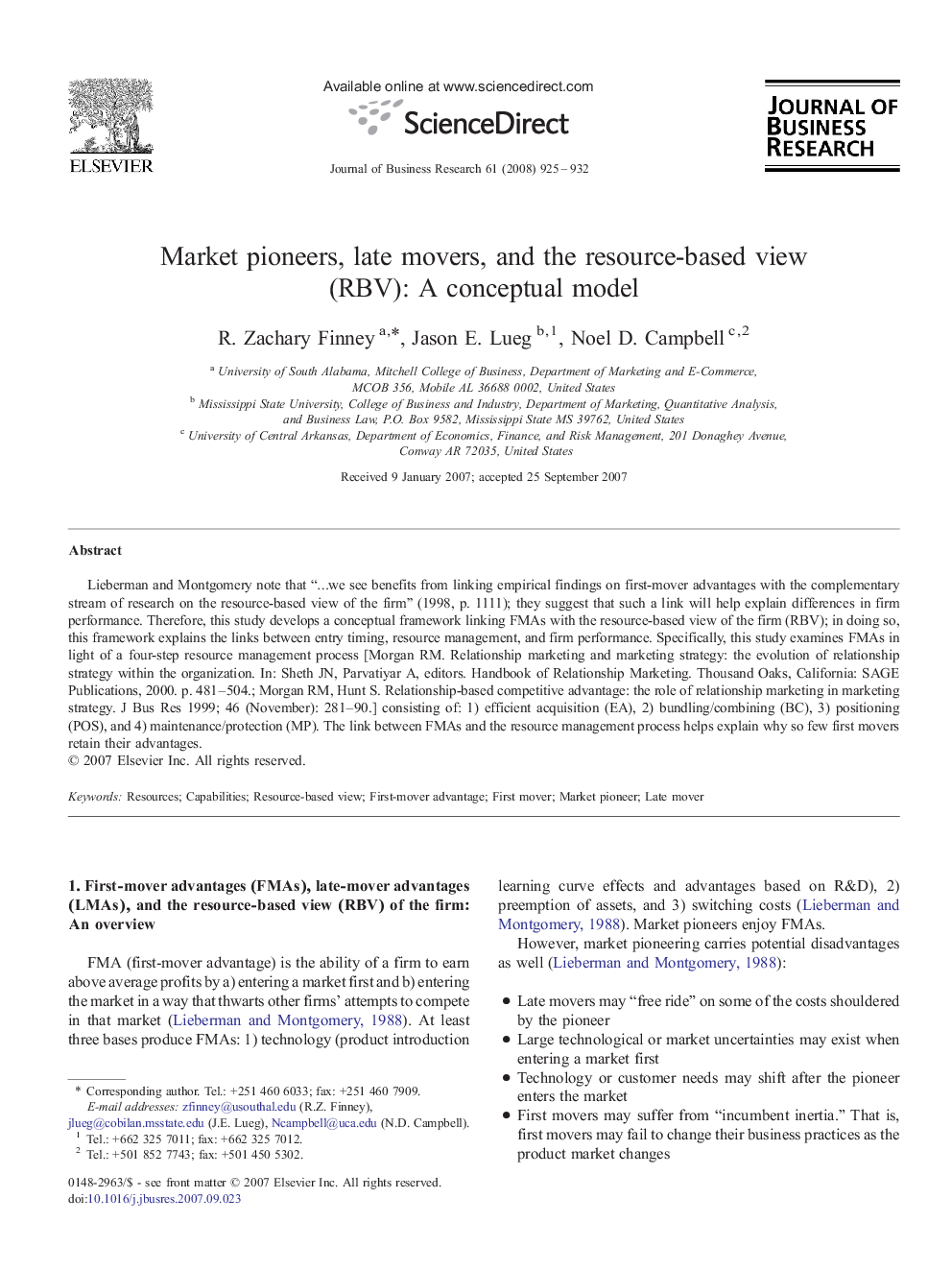| Article ID | Journal | Published Year | Pages | File Type |
|---|---|---|---|---|
| 1018603 | Journal of Business Research | 2008 | 8 Pages |
Lieberman and Montgomery note that “…we see benefits from linking empirical findings on first-mover advantages with the complementary stream of research on the resource-based view of the firm” (1998, p. 1111); they suggest that such a link will help explain differences in firm performance. Therefore, this study develops a conceptual framework linking FMAs with the resource-based view of the firm (RBV); in doing so, this framework explains the links between entry timing, resource management, and firm performance. Specifically, this study examines FMAs in light of a four-step resource management process [Morgan RM. Relationship marketing and marketing strategy: the evolution of relationship strategy within the organization. In: Sheth JN, Parvatiyar A, editors. Handbook of Relationship Marketing. Thousand Oaks, California: SAGE Publications, 2000. p. 481–504.; Morgan RM, Hunt S. Relationship-based competitive advantage: the role of relationship marketing in marketing strategy. J Bus Res 1999; 46 (November): 281–90.] consisting of: 1) efficient acquisition (EA), 2) bundling/combining (BC), 3) positioning (POS), and 4) maintenance/protection (MP). The link between FMAs and the resource management process helps explain why so few first movers retain their advantages.
